Key points:
– Sri Lanka is located at a very strategic location in the Indian ocean close the India and ancient silk road of China or modern One Belt.
– China Sri Lanka relations dates back to several centuries. Since the end of the civil conflict in 2009, on various occasions and for various development projects China has provided to Sri Lanka with loans, official development assistance as well as technical know-how.
– India and United States have given their more attention in Sri Lanka over the Chinese involvement. China in Sri Lanka is clearly visible as a hunt for more power: regionally and internationally
Introduction:
The Colombo Port City is nearly at its completion with high Chinese involvement in the commercial capital of Sri Lanka. A bill has been passed in the parliament of Sri Lanka giving legitimacy to Chinese involvement. The Hambanthota port was previously leased to China on a 99-year lease agreement. With these latest developments, the national security of Sri Lanka and other states of the South Asian region are under threat. China in Sri Lanka poses a threat to the security of the region and within the upcoming years, the balance of power in the region would be challenged diversely. The essay attempts to analyze how the Chinese Port City Project in Sri Lanka poses several national and regional security challenges from a realist point of view utilizing the theories of ‘Balance of Power’ and ‘Hegemonic Stability Theory’.
Sri Lanka and its Foreign Relations:
Sri Lanka, referred to as the Pearl of the Indian Ocean is located at a very strategic location in the world map. Not only this island state neighbors India, but also an emerging regional power of South Asia but also strategically placed in the ancient Silk Route of China or the modern One Belt: One Road initiative. From immemorial times, Sri Lanka (also known earlier as Taprobane, Serendib and Ceylon) has attracted the attention of various invaders and colonial masters. After being under the Portuguese, Dutch and British for a considerable long time, the British gave independence to Ceylon in 1948. In 1972, with the adoption of the first republican constitution Sri Lanka became a fully democratic republic. Since 1948, it is believed that several nations including India, China and the United States of America have been trying to strategically influence Sri Lanka. India and China as regional powers of Asia as well as the United States of America as a Super Power have been eyeing on Sri Lanka to spread their modern imperialist agendas. It could be said that all these nations try to exert their Smart Power to influence Sri Lanka and take benefits, strengthening their own national interests regarding resources and power. By means of providing loans, grants, aids and development assistance; China, India and the United States of America have infiltrated Sri Lanka. Sri Lanka has therefore been on the verge of its sovereignty being breached and challenged.
China in Sri Lanka dates back to several centuries. However, since the end of the 26-year civil conflict that existed in the island China has been a crucial partner in the development agenda. Since the end of the civil conflict in 2009, on various occasions and for various development projects China has provided us with loans, official development assistance as well as technical know-how. The construction of the Norochchole Coal Power Plant, Mattala International Airport, the Lotus Tower as well as the Port Cities in Hambanthota and Colombo could be considered as some development projects with Chinese involvement.
The Chinese Port City Project in Sri Lanka is a development project of the Colombo port as a commercial hub internationally. The Project Description of the Official Website states “Port City Colombo is a brand new city development built as an extension of the Central Business District of Sri Lanka’s vibrant commercial capital, Colombo. Spanning 269 hectares of reclaimed land from the sea, Port City Colombo will be South Asia’s premiere residential, retail and business destination, offering unmatched planned city living along the warm waters of the Indian Ocean. The development will comprise of 5 different precincts including the Financial District, Central Park Living, Island Living, The Marina and the International Island.” (CHEC Port City Colombo (Pvt) Ltd, 2021). It is aimed to convert the port city as the best livable city in South Asia.
With the construction of Port City in Colombo, economic development is expected over the next few years and decades to come. However, the economic development should also be considered together with the social and political impact that may arise with such a metropolitan and internationalized city in the commercial capital of Sri Lanka.
China has already claimed ownership of the previously constructed port city in Hambanthota. The Government of Sri Lanka, unable to fulfill its loan repayment liabilities, signed a lease agreement of 99 years with China. The Chinese Port City Project in Colombo could lead to such circumstances and if that is anticipated, Colombo being the commercial capital of Sri Lanka would provide an undue advantage to China. This does not simply breach our national sovereignty only, it would further affirm the grip China has on our economy as well as pose regional challenges to our national interests as a state, especially to our national security.
The purpose of this essay is to discuss the contemporary regional security challenges Sri Lanka is likely to face with the Chinese Port City Project in Sri Lanka. The researcher finds the ‘Realist Theory’ in International Relations as appropriate to discuss the contemporary security challenges paying attention to ‘Balance of Power’ and the ‘Hegemonic Stability Theory’.
Realism, Regional Balance of Power and the China in Sri Lanka
In order to explain the rise of China and Chinese involvement in Sri Lanka, the Realist Theory in International Politics and Relations would be most appropriate. Realists believe that when states interact with other states, they are always competitive and conflictual. They utilize all interactions to maximize their power and achieve their own interests. Realists believe that this competition and race among nations ensure a balance of power. According to Sandrina Antunes and Isabel Camisão. “states are continuously making choices to increase their own capabilities while undermining the capabilities of others. This generates a ‘balance’ of sorts as (theoretically) no state is permitted to get too powerful within the international system.”. (E-International Relations, 2018). China is continuously making choices to increase its capabilities in the South Asian region. It has already penetrated into several countries in the region and through means of acquisition of land and other resources, business investments and debt-trap diplomacy taken control of the countries indirectly increasing its power to be a power in the region.
According to ‘The Routledge Handbook of Security Studies’: ‘Realism is a school of thought based on three core assumptions about how the world works:
1. Groupism – Politics takes place within and between groups.
2. Egoism – When individuals and groups act politically, they are driven principally by narrow self-interest.
3. Power-centrism – Once past the hunter-gatherer stage, human affairs are always marked by great inequalities of power in both senses of that term: social influence or control and resources. (2010, 9-10).
Let us view China in Sri Lanka in the vision of the Realists:
China has come to Sri Lanka to engage in direct state interactions with Sri Lanka. By doing so, indirect interactions are done with India to prevent the rise of India as a regional power. By doing so, indirect interactions are done with the United States of America balancing power internationally and regionally as the U.S.A. is also involved in Sri Lanka as well as in the region. This proves to us the groupism involved.
China in Sri Lanka clearly points out the narrow self-interests China has. The Chinese want to invest in Sri Lanka and reap economic benefits while using the presence for political gain. By heavily investing in Sri Lanka, China is making Sri Lanka its allies in the international arena. States such as India and the U.S.A. would therefore be checked from major involvements. Additionally, China is suspected of having many other social, economic and political motives. This proves to us the egoism involved.
China in Sri Lanka is clearly visible as a hunt for more power: regionally and internationally. China already has the Hambanthota Port and the Airport under its firm grip. With the Port City Bill passed in the parliament, China’s power is established in the country’s commercial capital. China is now in a position to influence the society and control crucial resources of the country. This proves to us the power-centrism involved.
China is day-by-day increasing its power regionally and internationally. The One Belt: One Road (OBOR) initiative spans over 140 countries. Sri Lanka and several other South South Asian countries have signed Memoranda of Understanding with China for the OBOR initiative. This has enabled China to rise as a world economic power and enabled China to influence economic policies of many countries worldwide. China is also perceived as a nation that exerts Smart power to weaker states by providing loans and official development assistance. Several countries in South Asia including Sri Lanka have taken Chinese loans. We are perceived by the international community as a victim of Chinese debt trap diplomacy – a strategic diplomatic influence in internal affairs of a sovereign state. The Chinese Port City in Colombo is therefore speculated as Chinese strategy to gain influence not only into the internal affairs of the country but also to exert influence over the South Asian region. Sri Lanka’s closest neighbour India is emerging as a regional power. In such a context, the rise of China in South Asia is much speculated as posing a challenge to India to become a regional power which would undermine Chinese dominance in South Asia.
According to the ‘Balance of Power’ theory, for a peaceful world, a balance should be strived among the various state actors in the international society. Steven E. Lobell states, “imbalances and concentrations in military and material capabilities among the great powers are checked, and the equilibrium is restored in order to ensure the survival of the major powers in the international system.” (Oxford Bibliographies, 2019). India’s dominance in the South Asian region and international politics have been increasing over the last few years. China’s move into Sri Lanka and other South Asian states check the power of India and prevent the rise of India in the region. China also attempts to prevent India emerging into a world power in the international arena. India is also reacting to China’s modern imperialistic moves by securing overseas investments in many states and also trying to secure investments in Sri Lanka. There is intense competition between the two emerging powers of the region and world: China and India. However, one could say China has far more influence over Sri Lanka than China with the massive development projects and investments China is involved in within Sri Lanka. This challenges the balance of power and establishes a hegemonic power of China in Sri Lanka.
According to The Routledge Handbook of Security Studies, “Hegemonic stability theory builds on the observation that powerful states tend to seek dominance over all or parts of any international system, thus fostering some degree of hierarchy within the overall systemic anarchy.” (2010. 16) China is seeking dominance over all or parts of the international system. Through the OBOR strategy, foreign investments and debt-trap diplomacy, China has built up its own hegemonic power in South Asia challenging India as well as attempts to build up its hegemonic power in the overall international system challenging the United States of America.
Colombo Port City and Threats to Regional Equilibrium
China as a nation has influence over Sri Lanka owing to the already leased Hambanthota Port, the loan repayment debt of the Mattala International Airport, the Lotus Tower and many other development projects. The newly passed Colombo Port City Projects strengthens China’s dominance in Sri Lanka and Sino-Lankan ties. China is the largest investor in Sri Lanka and such immense investments cannot be expected from any other state. At this level, China seems to monopolize the foreign relations of Sri Lanka. Sri Lanka could not expect to develop any international ties that would cost them the Chinese allegiance and ties. This challenges all international ties and relations of Sri Lanka. Relations of Sri Lanka with powerful actors in the South Asian region, the neighbouring India and the Western Power, USA would therefore be checked indirectly. Kanwal Sibal, former Foreign Secretary of India has stated “Sri Lanka would like to have close ties with India and benefit from them but they will not be at the cost of its ties with China,”(Pranay Sharma, This Week in South Asia, 8 June 2021) The above statement clearly makes us realize that the Chinese have been able to achieve some form of hegemony in maintaining and advancing Sri Lankan foreign ties and strategically preventing significantly closer foreign ties with other states. Furthemore, by acquiring control over both ports: Colombo and Hambanthota, China hopes to publicize the Chinese dominance in Sri Lanka and South Asia to counterbalance the influence of the West. According to news in early 2021 “Chinese foreign minister Wang Yi called for Sri Lanka and China to cooperate in developing both ports into “twin engines” of industrial development and economic growth and to stand together to “safeguard the legitimate rights and interests of developing countries” against the pressures of “some Western countries.”(China-Embassy.Org, February 24) This in one way enables Sri Lanka to safeguard its legitimate rights and national interests against the pressure of the USA; but, on the other hand, binds naturally to Chinese influence. In Chinese news, Sri Lankan Foreign Minister Dinesh Gunawardena “said that Sri Lanka regards China as its closest friend and sincerely thanks China for its long-term, selfless help for Sri Lanka’s economic development, improvement of people’s livelihood, and coping with internal and external challenges” (China-Embassy.Org, February 24). Sri Lanka maintains excessively cordial relations with China and Sri Lanka’s allegiance with China is therefore without doubt strong that reinstates the hegemonic monopolization of Sri Lanka’s international ties and relations.
Sri Lanka is important to China due to Sri Lanka’s strategic position in the Indian ocean and the proximity to China’s long-time rivalry India. Chinese presence in Sri Lanka is a serious threat to India. India has risen as a regional power over the years and with China as an actor in regional politics India’s power is challenged. India has been ambitious in its international relations in the last two decades. India’s vision and interests to be a regional balance has not been challenged by its neighbours who lack the capacity both in terms of political power and military power. China at the doorstep of India is without doubt a challenge to India both in terms of political and military power. India has been upgrading its military over the last few years. India has also expanded its power over the international arena substantially. Chinese military is one of the most up-to-date and advanced military powers. According to the 2021 Military Strength Ranking by Global Firepower out of 140, China ranks the 03rd and India ranks the 04th. For 2021, China is ranked 3 of 140 out of the countries considered for the annual GFP review. It holds a PwrIndx* score of 0.0854. For 2021, India is ranked 4 of 140 out of the countries considered for the annual GFP review. It holds a PwrIndx* score of 0.1207 (a score of 0.0000 is considered ‘perfect’). (Global Firepower, 2021). According to the above data, the military power of India is unsurpassable by any of its neighbours or the South Asian countries. China is without doubt a challenge to India for its rise of power. India’s military power in the region is checked and balanced by China in Sri Lanka. China has assisted Sri Lanka to enhance its military capacity during and after the Civil War. However, Chinese acquisition of two major ports in Colombo and Hambanthota and the high probability of Chinese management lead to the speculation that China would be constructing a naval base in South Asia. While all activities would happen under cover, India would always be in tension of a possible attack as well as suspicion of aiding rebel and separatist groups in India following Mao and Communists Ideals. The presence of China in Sri Lanka and more specifically in the Colombo Port City can therefore be a security threat to Sri Lanka in terms of a power struggle and battle. The United States is also eyeing at China and keeping its power balanced. In the course of a military war emerging, regional security would be at stake with multiple actors coming from and out of the region.
On the other hand, economic competition between the rivalries exists. While India is strengthening its trade and economic capabilities, China is also engaged in continuous enhancement of its trade and economic capabilities. According to India Brand Equity Foundation, “There has been a perceptible shift in Overseas Investment Destination (OID) in last decade or so. While in the first half, overseas investments were directed to resource rich countries such as Australia, UAE, and Sudan, in the latter half, OID was channeled into countries providing higher tax benefits such as Mauritius, Singapore, British Virgin Islands, and the Netherlands.” (2021). Overseas investments by India clearly prove to us how India is expecting benefits from investing in both resource rich countries and countries providing higher tax benefits. According to CSIS ChinaPower Project, “Overseas investment offers China an opportunity to not just bolster its own economy, but also leverage its economic strength to increase its influence abroad. Driven in part by Beijing’s “Going Out” strategy and the Belt and Road Initiative, both of which encourage investment in foreign markets, Chinese firms have actively expanded their overseas footprint in a range of sectors in recent years.” (2021). China has invested in several countries covering Africa, Americas, Asia, Europe and Oceania. Both countries therefore are in an economic rat race. While the presence of China in Sri Lanka balances the emerging economic power of India, Chinese investments in Sri Lanka threaten the Sri Lankan political economy. Sri Lanka has potential for numerous Chinese investments. These investments could be in medium scale and large scale both short term and long term. Chinese investments in Sri Lanka not only allows China to obtain an economic advantage but also as economic investments in the South Asian region. China is economically overpowering the South Asian region.
When a Chinese venture is initiated or established in Sri Lanka, in addition to the investments China sends manpower and therefore employment opportunities generated are limited for Sri Lankans. Multiple development and investment projects have seen the arrival of Chinese manpower in Sri Lanka. This could be Chinese strategy to deal with overpopulation, a challenge China is currently facing. With Foreign Direct Investments, emergence of multiple employment opportunities is expected by any state. However, the Chinese model generates limited job opportunities. The Colombo Port City Bill allows Chinese nationalities to work in the Port City resulting in limited jobs for Sri Lankans.
Sri Lanka is the oldest democracy in South Asia. India is the most populous democracy in the world. India, Sri Lanka and many other countries have localized the ideas of liberal and social democratic forms of government. China does not belong to this camp of political, social and economic ideology. Chinese affinity to Communist ideology and a Centrally planned economy might result in authoritarian regimes restricting liberty and democracy not only in Sri Lanka but also in South Asia. According to Asanga Abeyagoonasekara, “The Chinese Communist Party (CPP) , with its Leninist political structure, has not only influenced China from within, but it has also influenced other developing nations who are hooked to its grand infrastructure strategy with the Belt and Road Initiative (BRI), injecting development reforms to democratic nations.” (2021). This is a political challenge to developing countries such as Sri Lanka. The Chinese communist ideology and the Leninist political structure will lead Sri Lanka towards more authoritarian and totalitarian rule. Abeygoonasekara further points out that, “The China Reform Forum (CRF), an academic research institute affiliated to the Party School of the Central Committee of the Communist Party, is busy making inroads into Sri Lanka through Rajapaksa’s political party SLPP and a local think tank advising the regime. The local strategic circle being influenced to appreciate an alternative model to democracy will have a dangerous impact, particularly when it comes to upholding liberal democratic values and principles.” (2021). Chinese communist ideology which is against the principles of individual liberty, democracy and democratic values and principles can bring forth adverse effects to the political system of Sri Lanka as well as in other countries in South Asia influenced by China. Unregulated political influence to countries such as Sri Lanka could lead to political crises. The United States is in a mission of protecting and promoting the liberal democratic principles and values globally. The Chinese agenda of promoting Communism could lead potentially to a cold war which would create global impacts and repercussions.
China is also suspected of supporting rebel groups and left-wing political movements in India. According to Dr. N. Manoharan’s analysis in ‘China’s Involvement in India’s Internal Security Threats: An Analytical Appraisal’, “externally-trained militants are more hardened, fight better and less amenable to negotiated settlement.” (2020. 5). He accuses China of training militants as well as argues that “China-trained militants obtained a more of leftist ideological orientation”. (2020, 5). As India has cultural and social relations with Sri Lanka. Sri Lanka could be used by China to penetrate into the internal affairs of India. Whether this happens or not, the mistrust and speculation can create problems of varying degree.
China is also very much engaged and involved in Pakistan which has historical issues with India. Chinese involvement in Sri Lanka aggravates India’s concern over China in the South Asian region. According to Shruti Jagard, “China’s pursuit of good relations with Pakistan goes much beyond the territorial dispute with India. Though there is local opposition to Chinese projects under the BRI, amongst the political elites and military leaders, China has a sanctified status.” (Observer Researcher Foundation, 2021). He further states that, “The China-Pakistan friendship has been the cause for much discussion in India and is seen as an intense strategic challenge, which has only been intensified by the CPEC.” (Observer Researcher Foundation, 2021). China seems to be encircling the neighbours of India challenging Indian domination in South Asia. Dr. Manoharan stresses, “To Mohan Malik, China’s strategy towards India has three elements viz. encirclement, envelopment and entanglement. ‘Encirclement’ is a kind of “strengthened Chinese strategic presence in Tibet, Pakistan, Nepal, Sri Lanka, Bangladesh, Burma and in the Indian Ocean island states.” ‘Envelopment’ is essentially “integrating all of India’s neighbours into the Chinese economy.” ‘Entanglement’ is “exploiting India’s domestic contradictions and multiple security concerns.” (2020). As per the above analysis, China seeks to encircle and envelop India using its influence in countries such as Pakistan and Sri Lanka.
Conclusion
The rise of China as a regional and world power and its simultaneous involvement in Sri Lanka via multiple tracks has caused much speculation among realists. Realists believe that the balance of power both regionally (as South Asia) and internationally are challenged with the rise of China.
China’s notable rivalry India senses threats to its internal and external security with China at its doorsteps. Not only is China developing close ties and influencing Sri Lanka but also with many other neighbouring countries making it possible for China to both encircle and envelop India. In the case of a worst-case paradigm: war, China would have spread its power and influence in most neighbouring countries in the region that would lead India to be attacked simultaneously in all directions. In other words, India’s response, if military action, would bring forth potential harm to multiple neighbouring nations.
Colombo as the commercial capital and Sri Jayawardenapura as the administrative capital of Sri Lanka is economically as well as politically important to both Sri Lanka and India. The Colombo Port is important for both trade and economy-related affairs as well as military affairs. With the Colombo Port City being open to Chinese influence and control, India is threatened as possibilities exist of influence to Indo-Sri Lankan trade relations and economic relations as well as the Chinese developing a naval base in the port city that can threaten India’s security. China in Sri Lanka is a challenge to India politically due to the ideological clash between Democracy and Communism as well as a challenge to the national security and internal affairs of the state in terms of suspicion of supporting militants and left-wing groups.
The United States of America has been trying to spread its influence and power over Sri Lanka through different agreements and development projects. During the former political regime from 2015 – 2019, the United States ‘Millennium Challenge Corporation (MCC) was attempting to sign a contract with the government which was strongly opposed by the then joint opposition (present government) and the public. The USA. lost a strategic opportunity to influence Sri Lankan politics. However, with adequate support of the previous regime and with more support from the current regime, China has been able to strategically influence Sri Lanka. On one hand, this context makes the USA. less powerful compared to China in convincing and strategically approaching a country. On the other hand, this makes more reason why the U.S.A. should compete with China. The USA. is in a competitive rat race with China in terms of economy, military, foreign ties and relations as well as in an ideological cold war redefined with China’s modern imperialistic strategies.
Sri Lanka as an independent and sovereign state is politically challenged by China. Not only have part of our territory been leased on a long-term basis, the country has fallen into debt-trap diplomacy. Additionally, investments spearheaded by the Chinese seem to bring more economic and social benefit to them. While the Chinese Yuan appreciated in its value, the Sri Lankan rupee has depreciated significantly. While Chinese manpower is attracted to Sri Lanka and has become part of the Sri Lankan society, Sri Lankan manpower is not only undermined but their job opportunities are looted. Sri Lanka should be concerned about its national security. With multiple entry points to Sri Lanka managed and influenced by China, we could speculate what comes in and what goes out of the country. With multiple entry points under Chinese management and influence, we could speculate the building of an under-cover naval base as well as a military presence that can put the nation’s security in risk in multiple ways.
China seems to monopolize international relations and affairs of Sri Lanka. China seems to prevent the rise of India as an emerging regional and international power. China seems to utilize all strategic means to influence the majority of countries including those in the South Asian region to seek economic, social and political benefits. In such a context, the balance of powers theory of realists seems to be challenged or redefined. As Sri Lankans and the international community, it is important that we concentrate on what the Chinese are aiming at and doing. Cautious relations and taking necessary precautions could only lead us to be free of a modern imperialist agenda and prevent the rise of China as a hegemony.
Bibliography
Abeygoonasekara, Asanga. 2021. “CCP Centenary and the Growing Chinese Footprint in Sri Lanka.” Lse.Ac.Uk. March 1, 2021. https://blogs.lse.ac.uk/cff/2021/03/01/ccp-centenary-and-the-growing-chinese-footprint-in-sri-lanka/.
“Balance of Power Theory.” n.d. Oxfordbibliographies.Com. Accessed June 16, 2021. https://www.oxfordbibliographies.com/view/document/obo-9780199743292/obo-9780199743292-0083.xml.
Cavelty, Myriam Dunn, and Victor Mauer, eds. 2009. The Routledge Handbook of Security Studies. London, England: Routledge.
“CHEC Port City Colombo (Pvt) Ltd – Sri Lanka.” n.d. Portcitycolombo.Lk. Accessed June 16, 2021. https://www.portcitycolombo.lk/about/.
Firepower, Global. 2021. “2021 Military Strength Ranking.” Globalfirepower.Com. March 3, 2021. https://www.globalfirepower.com/countries-listing.php.
“Indian Investment Abroad – Overseas Direct Investment by Indian Companies.” n.d. Ibef.Org. Accessed June 16, 2021. https://www.ibef.org/economy/indian-investments-abroad.
“Introducing Realism in International Relations Theory.” 2018. E-Ir.Info. February 27, 2018. https://www.e-ir.info/2018/02/27/introducing-realism-in-international-relations-theory/.
Jargad, Shruti. 2021. “Lessons in Friendship: Explaining 70 Years of China-Pakistan Relations.” Observational Research Foundation. May 31, 2021. https://www.orfonline.org/expert-speak/lessons-in-friendship-explaining-70-years-of-china-pakistan-relations/.
Manoharan, N. n.d. “China’s Involvement in India’s Internal Security Threats: An Analytical Appraisal.” Vifindia.Org. Accessed June 16, 2021. https://www.vifindia.org/sites/default/files/China’s%20Involvement%20in%20Inda’s%20Internal%20Security%20Threats%20An%20Analytical%20Appraisal.pdf.
Schrag, Jacque. 2016. “Does China Dominate Global Investment?” Csis.Org. September 26, 2016. https://chinapower.csis.org/china-foreign-direct-investment/.
Sharma, Pranay. 2021. “India’s Concerns over China’s Rising Influence in Sri Lanka Grow with Progress of US$1.4 Billion Port City Project.” South China Morning Post. June 8, 2021. https://www.scmp.com/week-asia/economics/article/3136486/indias-concerns-over-chinas-rising-influence-sri-lanka-grow.
“Wang Yi Speaks with Sri Lankan Foreign Minister Dinesh Gunawardena on the Phone — Embassy of the People’s Republic of China in Mongolia.” n.d. China-Embassy.Org. Accessed June 16, 2021. http://mn.china-embassy.org/eng/gnyw/t1856839.htm.
IF YOU VALUE THE INSTITUTE OF NEW EUROPE’S WORK, BECOME ONE OF ITS DONORS!
Funds received will allow us to finance further publications.
You can contribute by making donations to INE’s bank account:
95 2530 0008 2090 1053 7214 0001
with the following payment title: „darowizna na cele statutowe”



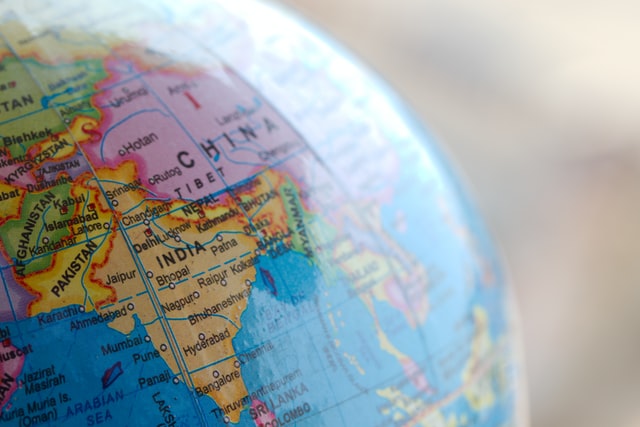

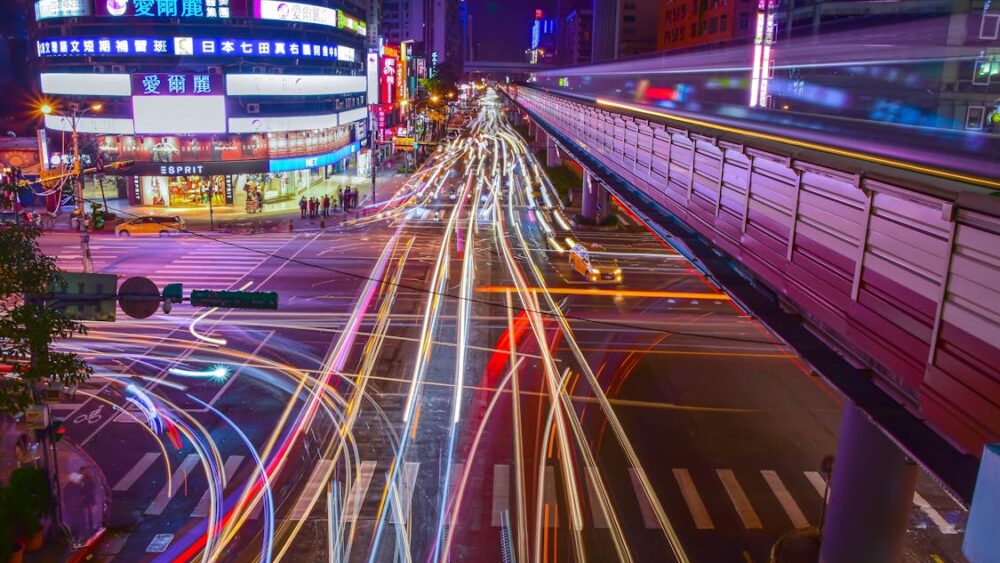




















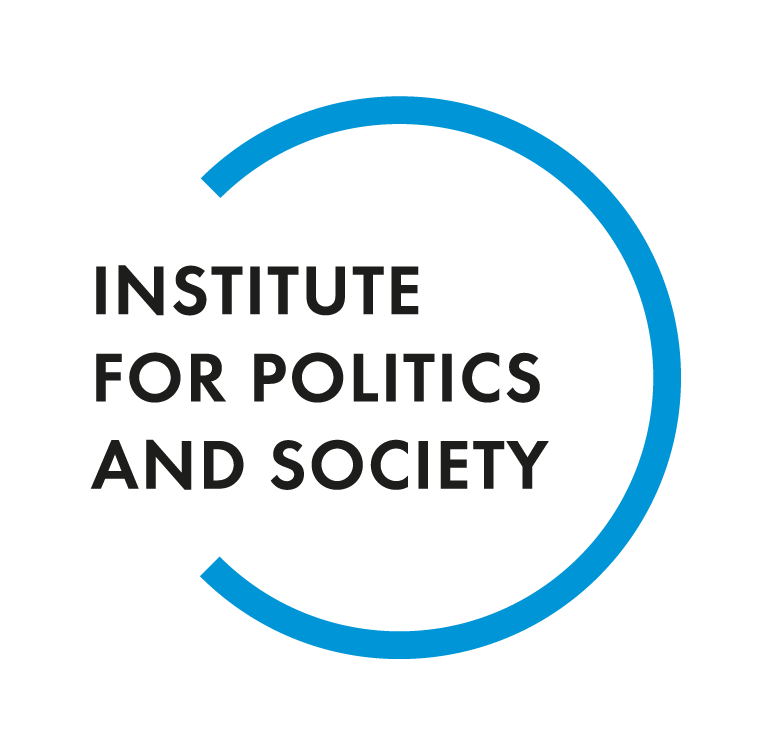


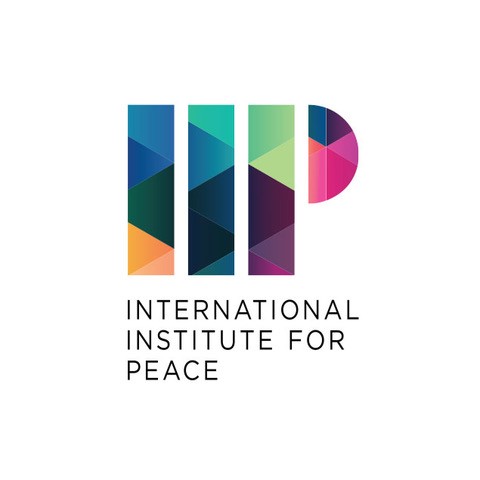
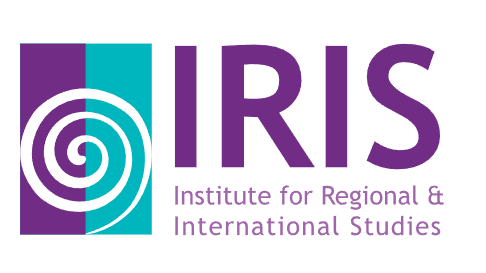
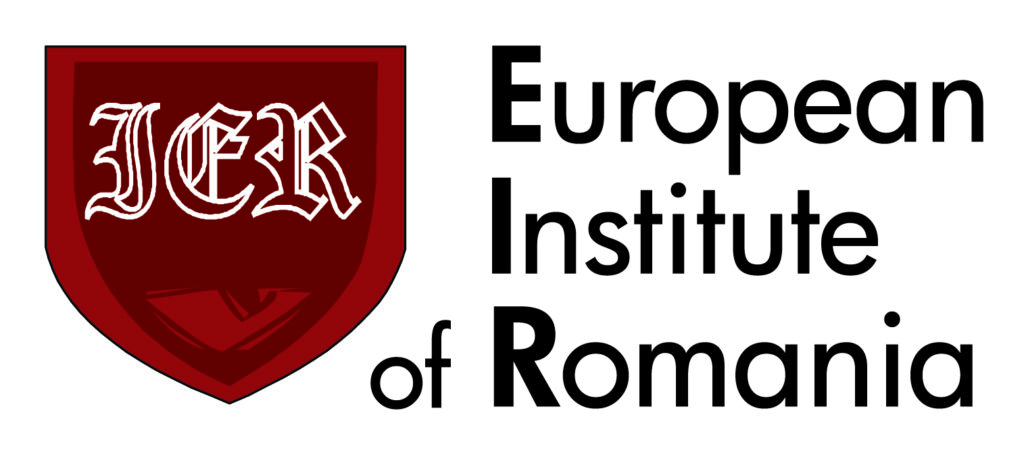
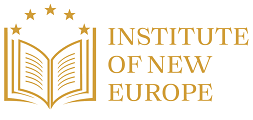
Comments are closed.